
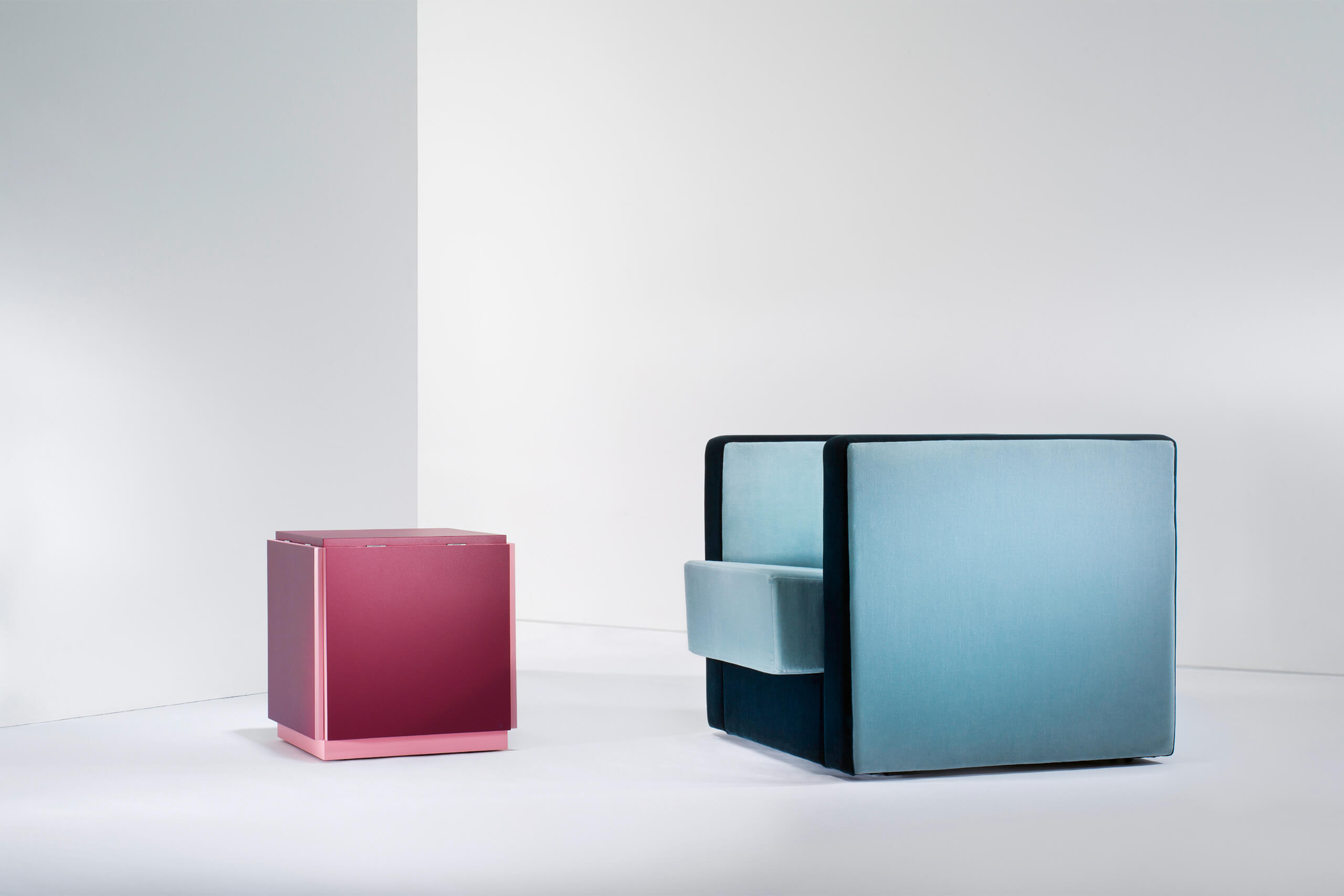
K10N
No longer invisible
Tobias Groß turns unobtrusive folding miracle M10 into a bright and fresh piece of furniture with surprises. An inconspicuous cube, Erich Brendel’s table seems to offer little in the way of discoveries. But then a smile dawns on the viewer’s face, as it unfolds and turns into a Swiss cross, reflecting its source of inspiration – the austere lines of Walter Gropius’ office. In his rethink of the M10, Tobias Groß livens things up: he raises Brendel’s table from its invisibility, giving it a visible, smaller and more colourful design. He maintains the table’s structural character and really makes it stand out. The surfaces and supports of the M10 have been pared down, making them look less solid and creating a lightweight, flexible piece of furniture. The little brother of Erich Brendel’s former tea table.
+ read more
- einklappen
And since a table can nowadays no longer serve for five o’clock tea occasions only, the Cologne designer has reduced its proportions to those of a side table. He has also added a cheerful note to its exterior. A new two-tone design makes the table attractive for modern interiors. Tobias Groß has washed the surfaces in calm, muted colours from olive through red to blue. And he has accentuated the profile edges with fresh pastel hues. Running all around the table, they give it a new, ever surprising, appearance, depending on the position of the panels.
For the BauhausNowhaus campaign the Cologne-based designer has enhanced the M10’s visibility. And in doing so has delivered a timelessly beautiful product that is ready to unfold its true potential in a contemporary interior.
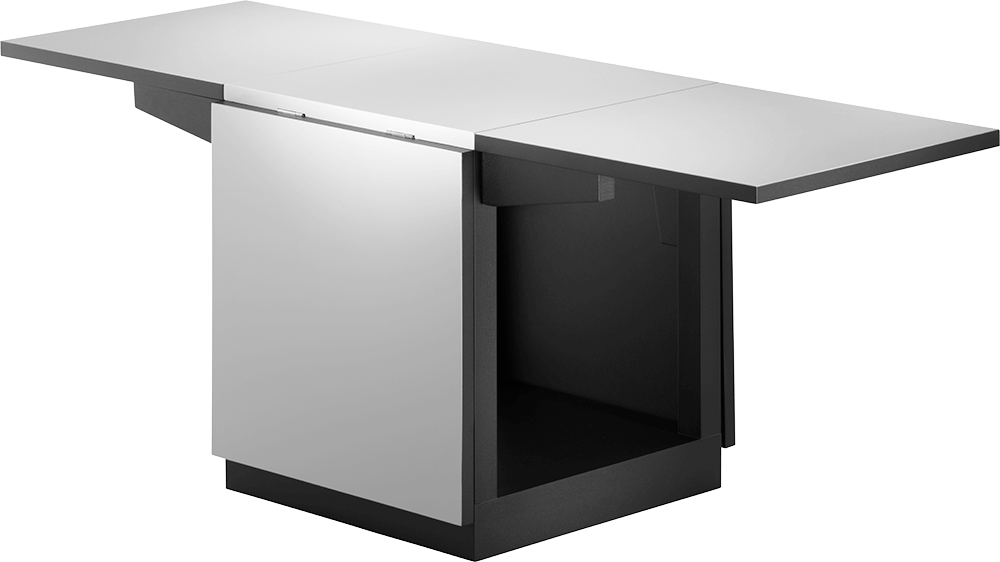
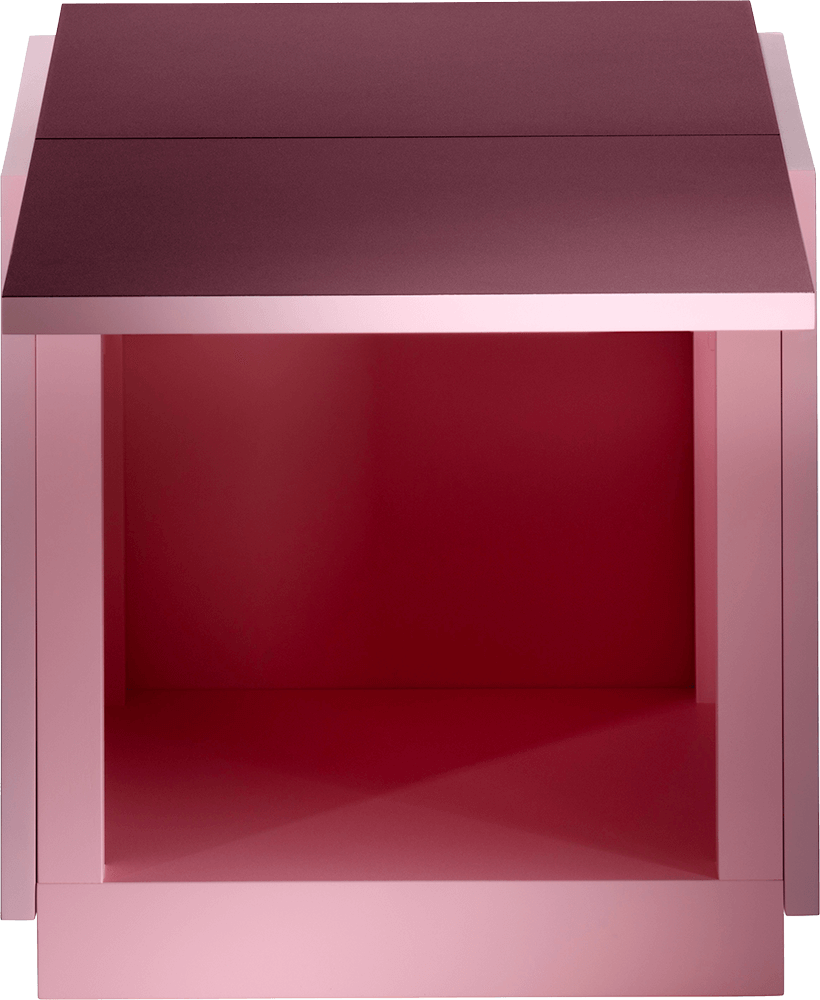
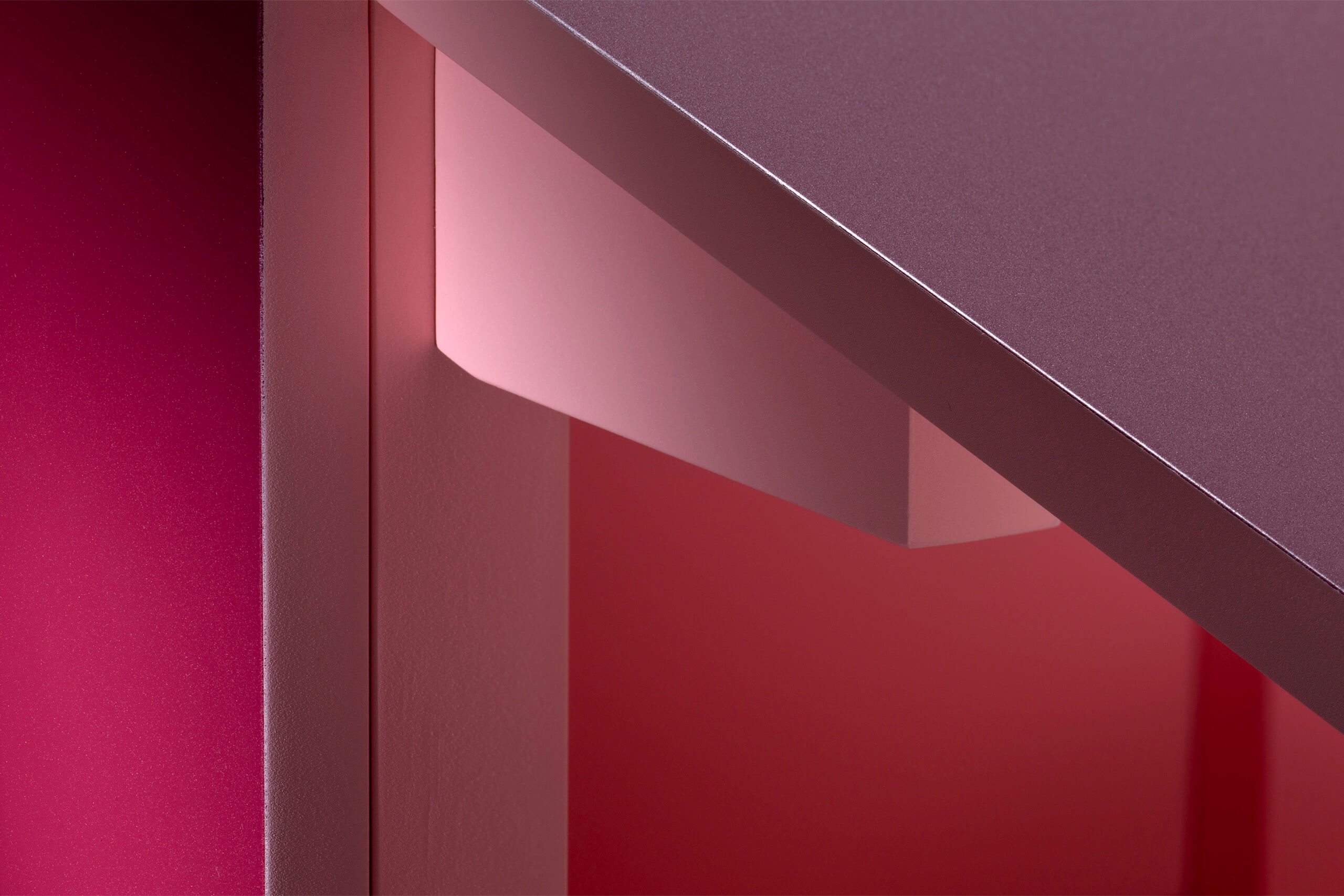
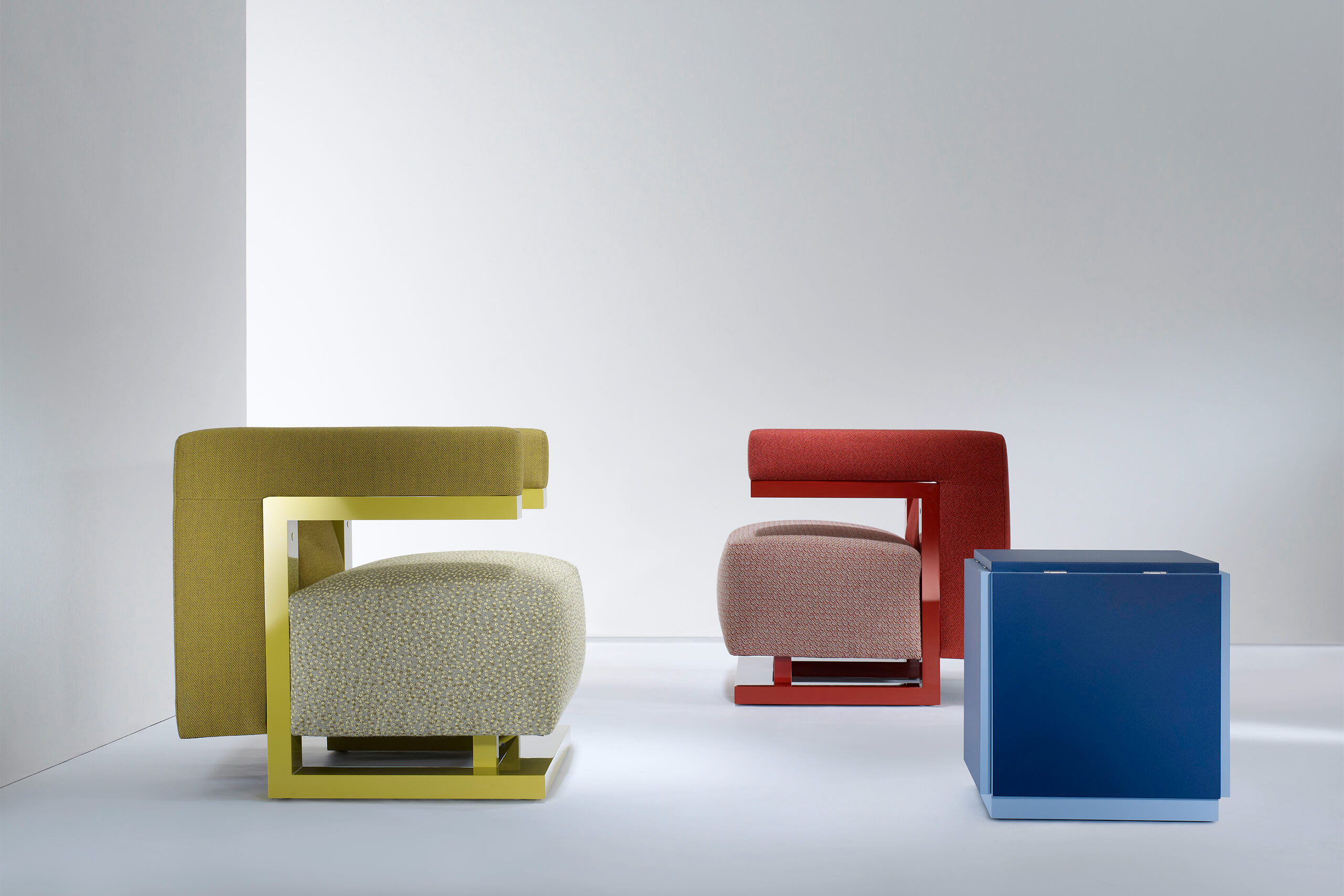
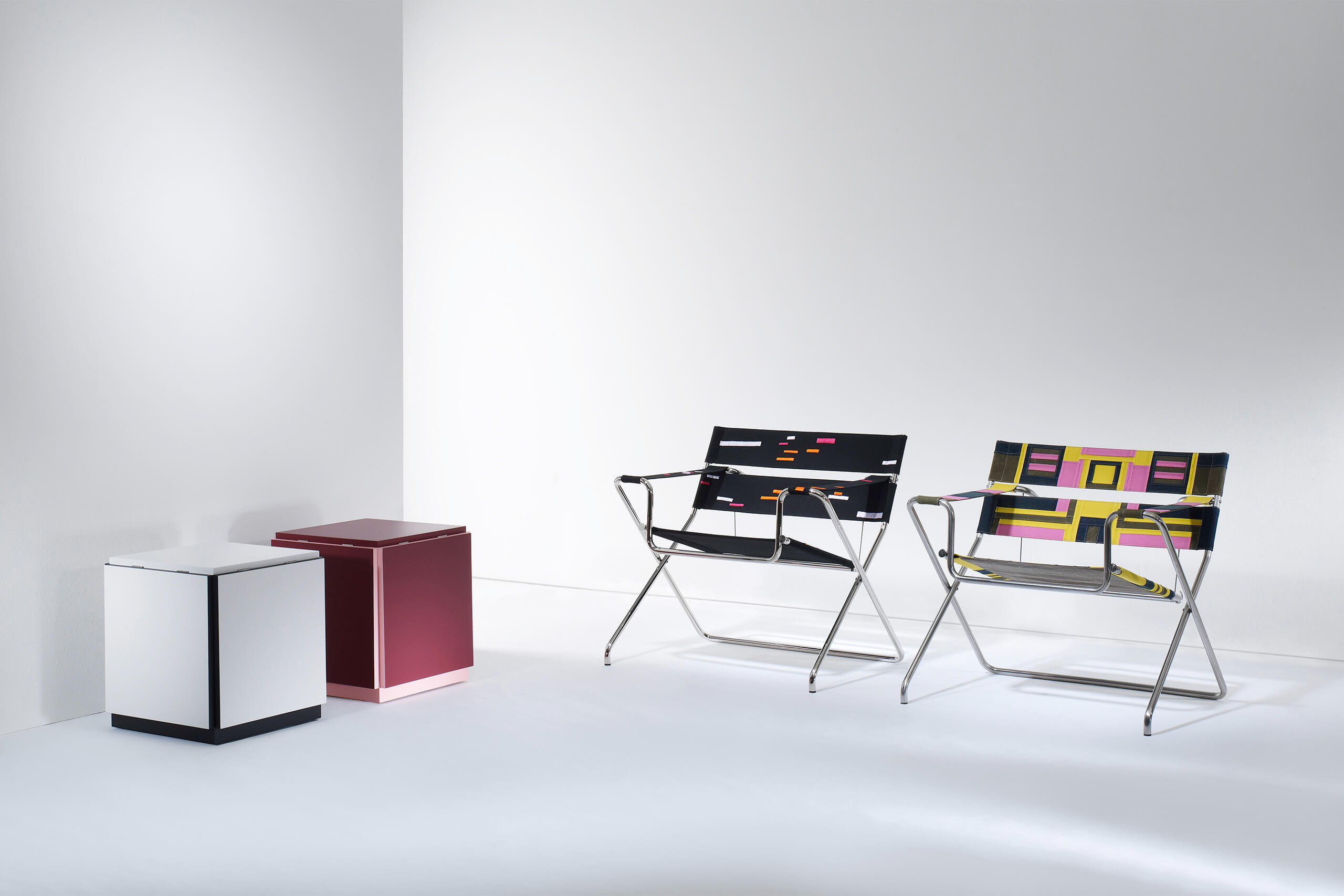
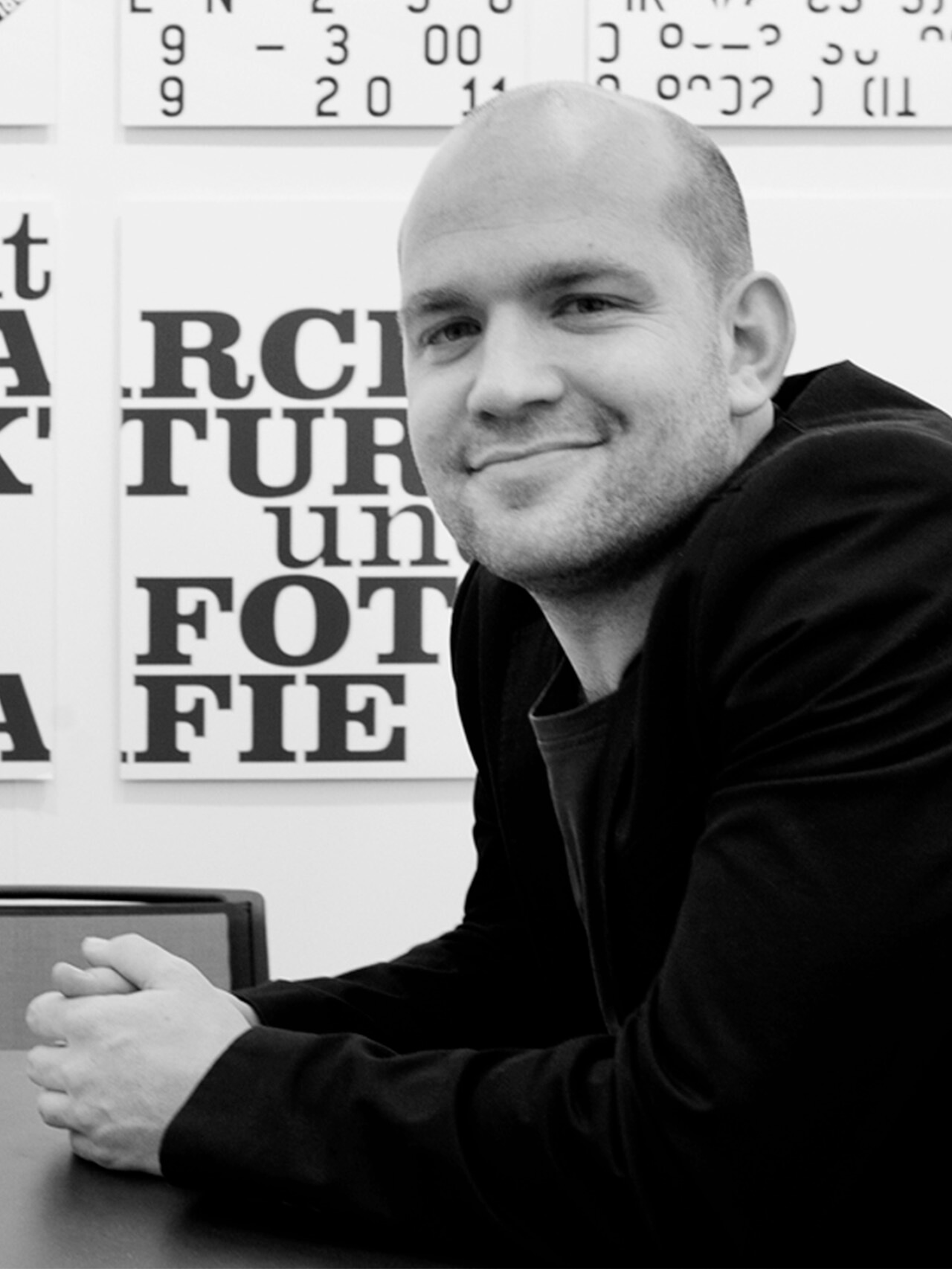
Tobias Groß was born in Braunschweig in 1976, is married and a father of two. From 1997 to 2002 he studied design at Cologne Technical University, graduating with a diploma degree in design. First place in Messe Frankfurt’s First Move Design Awards for his diploma thesis. He has been employed by a number of design agencies, including frog design California, Sunnyvale, Brand Department, in 2003. He founded his own interdisciplinary design studio großgestalten Kommunikationsdesign in Cologne in 2004, and Studio für Gestaltung in Cologne in 2018. He still works for numerous well-known clients in the field of architecture, design, art and culture today. Appointed as lecturer for information design by Rheinische Fachhochschule Köln University of Applied Sciences in 2012.
+ read more
- einklappen
About Studio für Gestaltung, Cologne:
A profound engagement with its customers’ theme worlds is pivotal to the work and projects of Studio für Gestaltung in Cologne. “Our mission is to think forward the attitude and products of our customers,” says agency owner Tobias Groß. “Communication as an extension of the client’s identity.” Team spirit, and an open and interdisciplinary approach are part of the agency’s philosophy. For seven years the studio has also been responsible for communicating the Tecta brand. The minimal but colourful design of the catalogues, brochures and exhibition booths reflect the company’s decision to actively think the Bauhaus forward.
Today, over 50 national and international awards bear witness to the high quality of Studio für Gestaltung’s work. They include: The Most Beautiful German Books, 100 Best Posters, Red Dot Communication Design Award, Design Award of the Federal Republic of Germany, iF Communication Design Award, ADAC Award.
Interview with Tobias Groß
Brendel’s tea table gets edgier and younger
For your mission to reinterpret a piece of Bauhaus furniture, you and your Studio für Gestaltung chose Erich Brendel’s tea table. A piece of furniture that seems rather unobtrusive. What made it appeal to you?
+ read more
- einklappen
Tobias Groß: As designers, we have long been collaborating with Tecta. In the course of our collaboration, I was increasingly struck by this unusual but at the same time demure tea table. It doesn’t draw much attention to itself and has not been much in the spotlight so far. The more we looked at the table, the more enthusiastic we became about it. Brendel’s design is restrained and uncluttered – just like the Bauhaus. It is all about simplicity, functionality, but also playfulness and humour. Things that are very much “today”.
What construction aspects did you like?
Tobias Groß: It’s a table that looks demure but can suddenly appear extroverted, generous and expansive. Thanks to the folding option it can change its appearance in all kinds of new ways. If you fold out one side, it embodies the cantilever aspect – giving it a close connection with Tecta. Each time you open another side it gains a new dimension. The table is simply an ingenious piece of furniture, because you can double, triple or even quadruple its surface.
What did you change in your reinterpretation?
Tobias Groß: Actually, Bauhaus furniture deserves so much respect that you don’t want to change anything at all. BauhausNowhaus played right into our hands as far as the “permissible” question was concerned: what exactly can you still improve about the table? We realised that you can pare it down even further. We let the basic cube shape take centre stage, but we removed the pedestal because it made the cube more vertical. Erich Brendel wanted to add to the table’s height, but we didn’t need the height for our final design.
Is the tea table still intended for its use as a piece of five o’clock furniture today?
Tobias Groß: I think of it as a side table, no longer as a tea table. I tried it out at home, but it was rather intrusive in its old dimensions. We have deliberately reduced its size to fit a young modern home. The surfaces and supports were pared down to create a more lightweight, flexible piece of furniture than before.
What did you want to emphasise about the new table and update for today?
We wanted to emphasise the structural aspect of the table. The hinges are visible and you can see all the structural elements. By emphasising the profile edges with accent colours we want to draw attention to and underline the edgy nature of this piece of furniture. The new two-tone design gives it a fresh contemporary look. For the surfaces we used calm, muted colours: olive, red and blue. The edges stand out in fresh pastel hues. They go all around the table and, depending on the position of the panels, give it a new, surprising appearance.
Do graphic designers have a different way of thinking about products?
As graphic designers we initially had some crazy ideas for the M10’s surfaces. Bauhaus patterns, Pop Art colours, Memphis designs – we tried out all kinds of things. But we then decided against all that, because it was too loud. There’s a lot you can do with cubes. But we didn’t want to downgrade the Bauhaus product to a marketing gimmick or graphic cube. Everything we do has to make sense, with a focus on the construction. We are not after big effects, neither is our Studio für Gestaltung.
Whom would the M10 be suitable for today?
In its current interpretation it would be great for a small home where you need flexible furniture. It is not limited to a specific activity or action but piece of furniture with many different faces. You can use it as a stool if you push it out of the corner. Most products are designed entirely for a specific activity. This can be a help when buying, but more flexibility gives you the huge advantage that the product can serve many different purposes and has a much higher usability.
What would be the next product Studio für Gestaltung could be interested in?
We are fans of Peter Keler. The D1, which is almost a hundred years old, is the epitome of a wheeled armchair as a simple cube. There is a lot you could to with the materials theme. In addition, it would be a great idea to open a “Rolling Tecta Pop-up Café” featuring the wheeled Tecta tables and armchairs, where everything is movable. It would look different every hour, because visitors can change and move everything – be it for two, four or ten guests. That would be a joyful project (laughs).